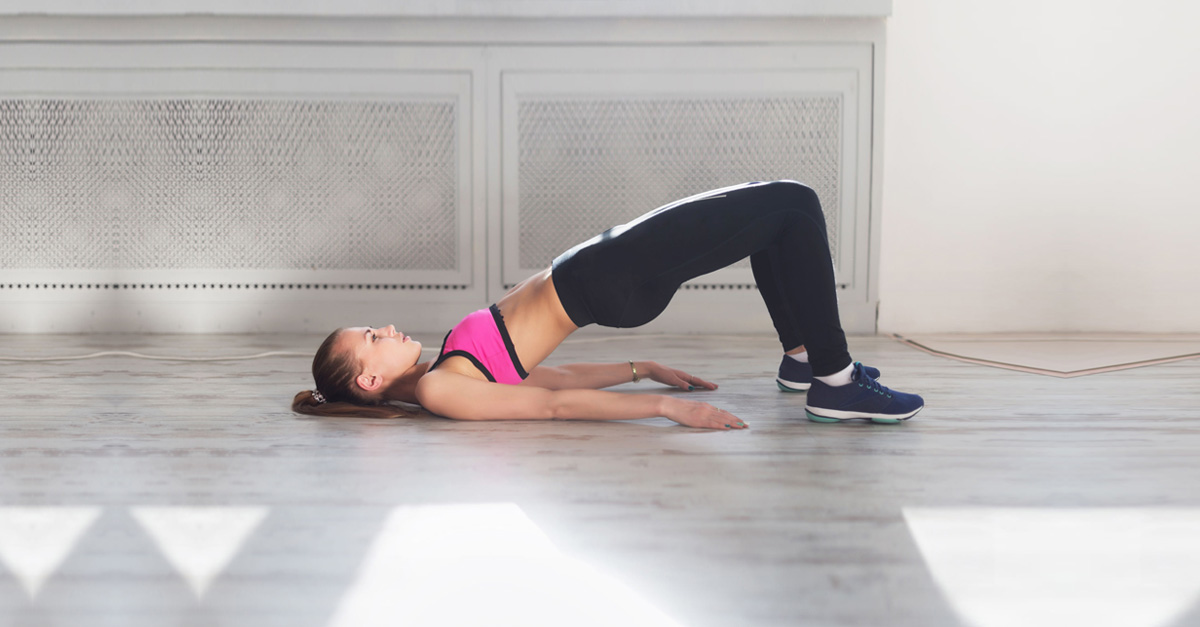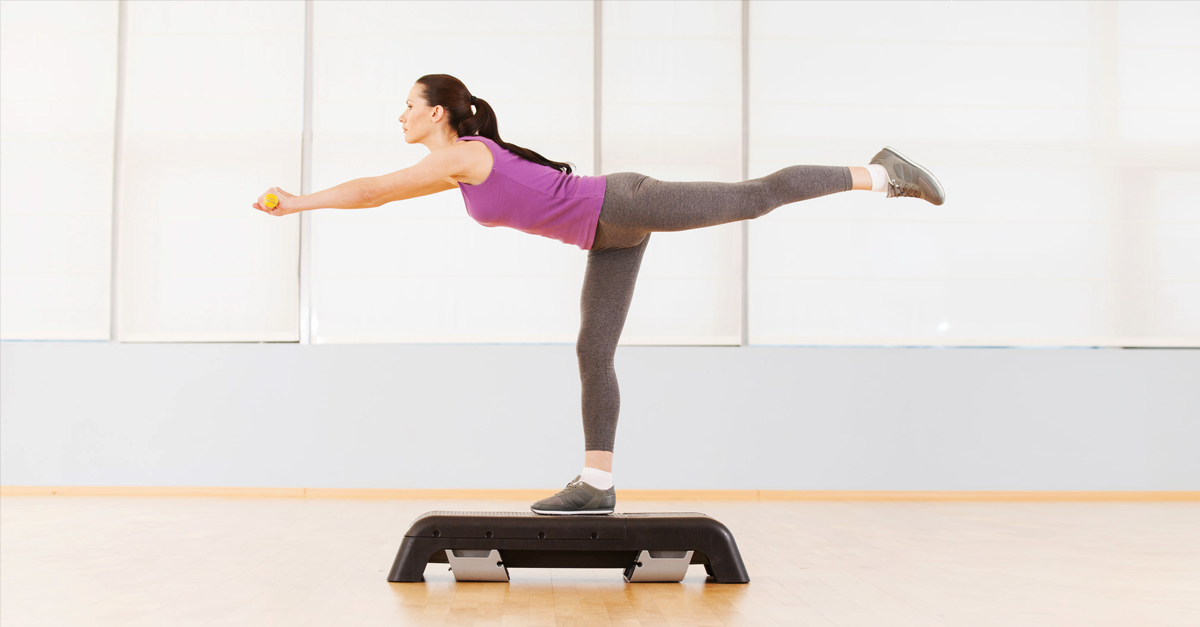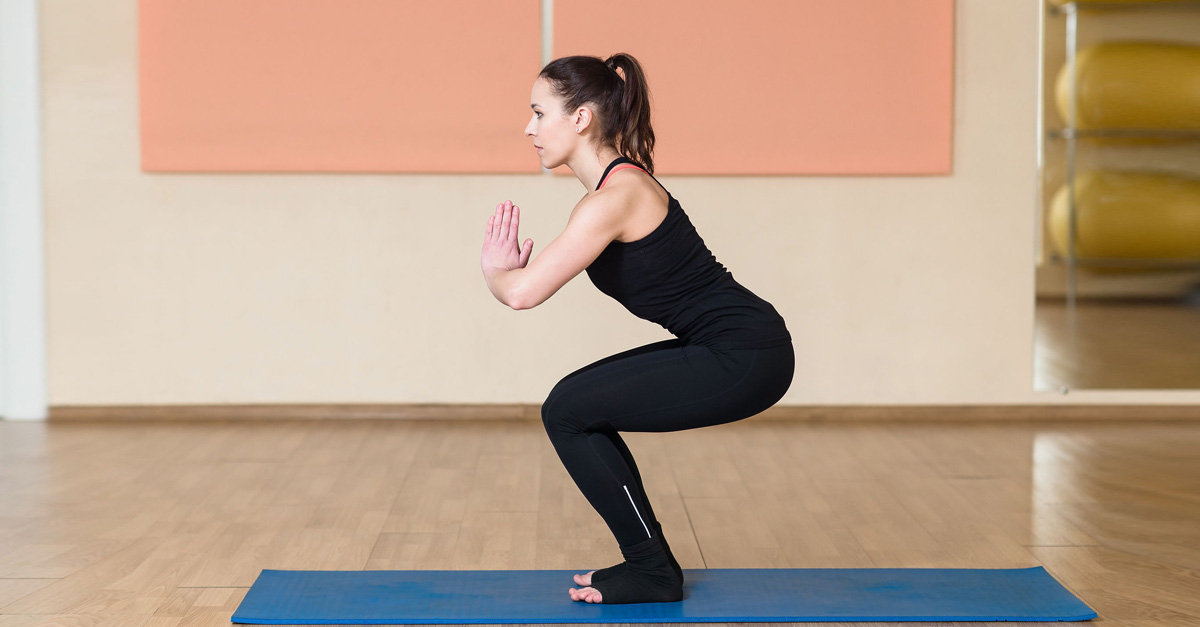
Best Glute Exercises
The following exercise program is just a guideline to restore and strengthen gluteal muscles. If you have an injury and suspect inhibited gluteals I highly recommend seeking the help of a qualified professional so they can determine what is causing the inhibition and correct it properly.
Strengthen Gluteal Muscles
Heel Press To Floor
1. Lay on your back with your knees bent and feet flat on the floor in one line with the hips, knees, and ankles.
2. Press your heel to the floor and concentrate on the strength of the contraction at the buttocks. You should first try this one side at a time and notice if there is any difference in strength. If you feel the calves working too much, lift the toes up and press only the heels to the floor.
Pelvic Curls
1. Lay on your back with your knees bent and feet flat on the floor in one line with the hips, knees, and ankles.
2. Begin engaging the buttocks as performed above in the Heel Press. Then bring the pubic bone to the sky and continue to roll up sequentially through your spine onto your shoulders. Make sure you are engaging your abdominals so you do not arch your lower back.
3. Roll down to the starting position from the top of the spine. Be careful not to tense up your shoulders and neck here.
4. Optional Progression: Try with one leg extended to the ceiling with a flexed foot. As you lower your hips pull the knee of the extended leg to the chest and then press the hips back up while pressing the heel of the extended leg back to the ceiling.
Integrating The Pattern
Deadlift
1. Stand tall with the arches of your feet lined up with the outside of your hips. Engage your buttocks and legs by performing a “corkscrew” action, engaging the muscles of the legs while maintaining your feet in a firmly planted position. Hands can be behind the head to help keep the spine upright.
2. Flex at the hips by sending them straight behind you. This is the hip hinge, an important function for bending properly. As you continue to send the hips back in space, using this hip hinge, maintain the torso in one place so you eventually become parallel to the floor in a flat back position rather than collapsing and rounding the spine.
3. Re-engage the buttocks and legs by pressing the hips forward to bring the torso back to the upright starting position.
4. Optional Progressions: Use a kettlebell or weighted bar maintained close to the body. Once you are able to perform cleanly, progress to the single leg deadlift.
Lunge
1. Step out with one leg far enough that when you descend, your knees bend at 90 degree angles and do not move forward beyond the ankles. Keep your hands behind your head and your torso vertical. As you descend, the back heel will lift and the back knee will lower straight down until it almost touches the floor. Make sure the knees do not push inwards toward the midline of the body, but remain in line with the hips and ankles. Also make sure the hips remain on the same plane.
2. To return to the starting position press down through the front heel to re-engage the buttocks. Repeat for the desired amount of reps and then switch sides.
3. Optional Progression: Add torso rotation towards the front leg while maintaining a stable base. Make sure the arms move in opposition to the lower body just like in gait.
Single Leg Step-ups
1. Start with one leg up on a step. The opposite arm is forward. Make sure hips, knees, and ankles are aligned and that the hip of the lead leg is not hiked up.
2. Press down into the heel of the lead leg and step up to balance. As you are stepping up, move the rear leg forward with the knee on that leg bent at 90 degrees. Allow the arms to switch naturally so they are again in opposition to the lower body. This will help with balance.
3. Stay tall as you send the leg that is up back down to the starting position. Repeat for the desired amount of reps and then switch sides.
4. Optional Progression: If you do not have shoulder issues try holding a kettlebell firmly overhead in the opposite arm of the leg that is lifting from back to up, keeping the arm in a neutral position throughout the exercise. The arm should make a straight line over the body. It is imperative that the spine remain in a neutral position.








